By Kirsty Piendl
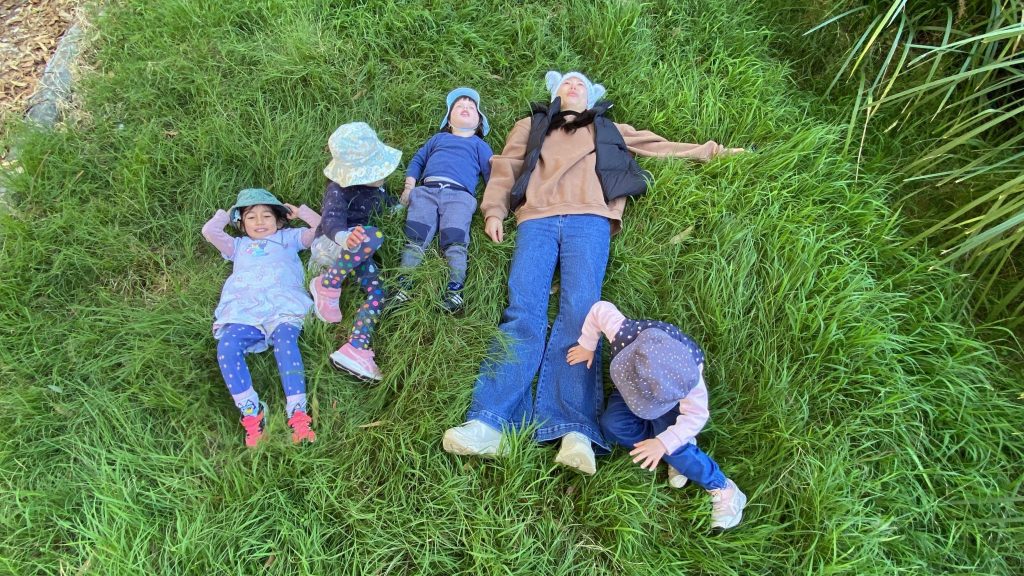
Over the years I have dabbled with self-regulation, through Dan Segal (2012) and Stuart Shanker’s (2017) work and have considered how we (adults and children) process stress. While learning more about self-regulation, I realised that the teaching team and I did not have clear practices to support children to regulate themselves. It has been through our recent partnership with Inner West Paediatrics that I was introduced to the ‘Zones of Regulation’(Zones) created by Leah Kuyper, a tool that simplifies a complex concept for children. Working with an occupational therapist, the tool was initially introduced for a particular child. The more I learnt about the zones, the more I considered using this as a teaching tool to support my group to understand their emotions.
My introduction to the zones sparked my interest in further researching self-regulation and how it can be taught to children. In Brene Brown’s ‘Atlas of the heart’ (2021) she states, “The average number of emotions named across the survey was three. The emotions were happy, sad, and angry” (pp. xxi). Reading this and considering the ‘Zones of Regulation’ I began to look at myself and my responses when I was in different emotional states. If I struggle to identify, respond, and regulate my own emotions how can I expect that of children?
I come from a generation where we were never taught about our emotions. I was not given the language or courage to consider or talk about them. I want the children of today to have the courage to talk about their emotions and have the skills to seek the support they require to regulate themselves.
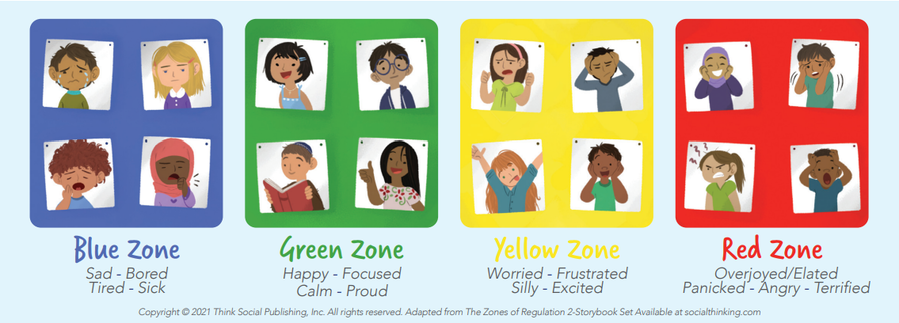
When learning about the zones we engaged in conversations about how certain emotions make us feel and which zone we felt they fitted in. Group discussions about how our brains work when in different zones supported a deeper understanding of our emotions. We then went through a process of linking behaviour to emotional states and the zones. The zones were labelled with words developed by the children about the brain’s responses. Using the zones to support conversations about emotions has made the children and teachers more comfortable admitting when we aren’t in a good brain space. It has allowed the children to recognise why their teachers or peers are having the reactions they are and supports them to get back to a calm state.
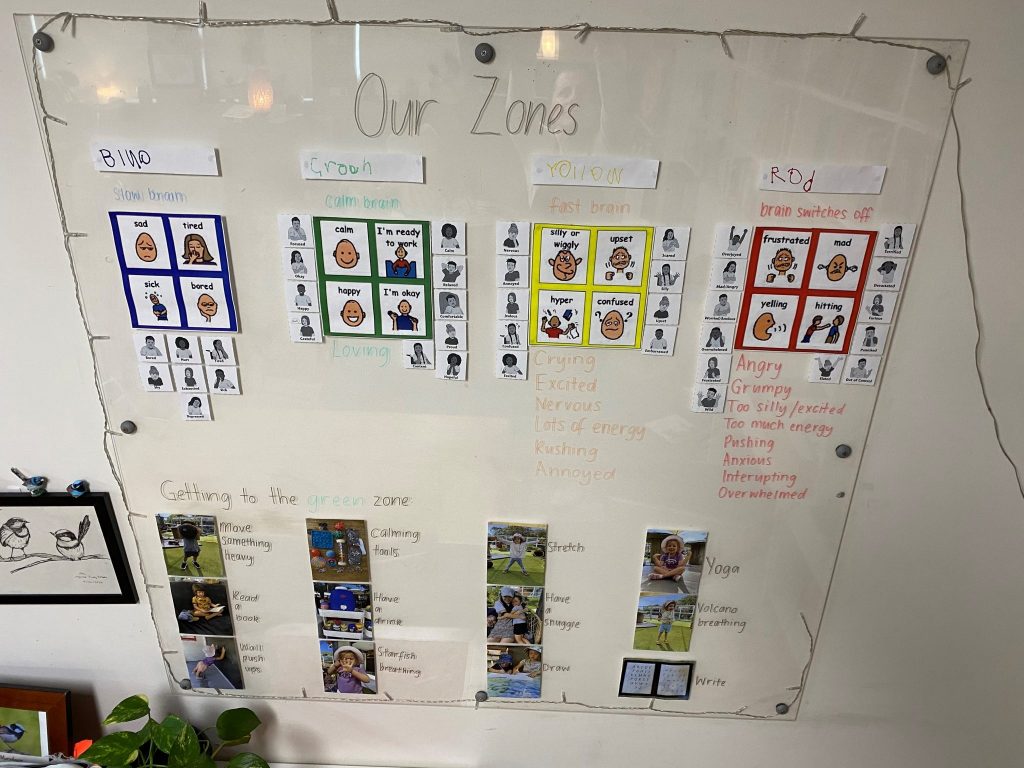
As the adult in this research and teaching, I view myself as the children’s co-regulator. I look deeper into why certain emotions may be presenting in a child. I consider; is there anything else going on for the child? Has their routine changed? Are they well? Is there anything else we can do to limit these feelings? Is the environment overstimulating for them? Have they eaten? Did they sleep well? Understanding the reason for emotions is complex.
“Self-Regulation starts by reframing a child’s behavior and, for that matter, our own. It means seeing the meaning of the child’s behaviour, maybe for the first time.”
— Stuart Shanker
When children have big emotions, we give them time to feel their emotions and calm themselves. We have a collection of resources and strategies that are used to support calming down. The most popular are our ‘calming tools’ (sensory toys) which are used in a quiet, less stimulated space. Alternatively, children may choose a calming activity from our flip book, ‘Getting to the Geen Zone’. With my support, the children created a visual aid of different calming activities they may like to engage in when they are in the red and yellow zones. Some of the activities include kicking a ball, drawing, reading a book, and moving heavy objects. If their peers wish to join them, they are required to ask and respect the answer given.
We have learnt that some children prefer to calm down alone, while others like to have a friend or teacher close by. When they return to a calm state, we discuss their feelings, the behaviour we witnessed and the zone they were in. Taking the time to reflect on their behaviour, talk through their feelings and hear about it from another’s perspective is an important part of the process. Using the zones allows it to be framed in a way that does not label the child, but rather invites thinking about the physiological responses they have to stress.
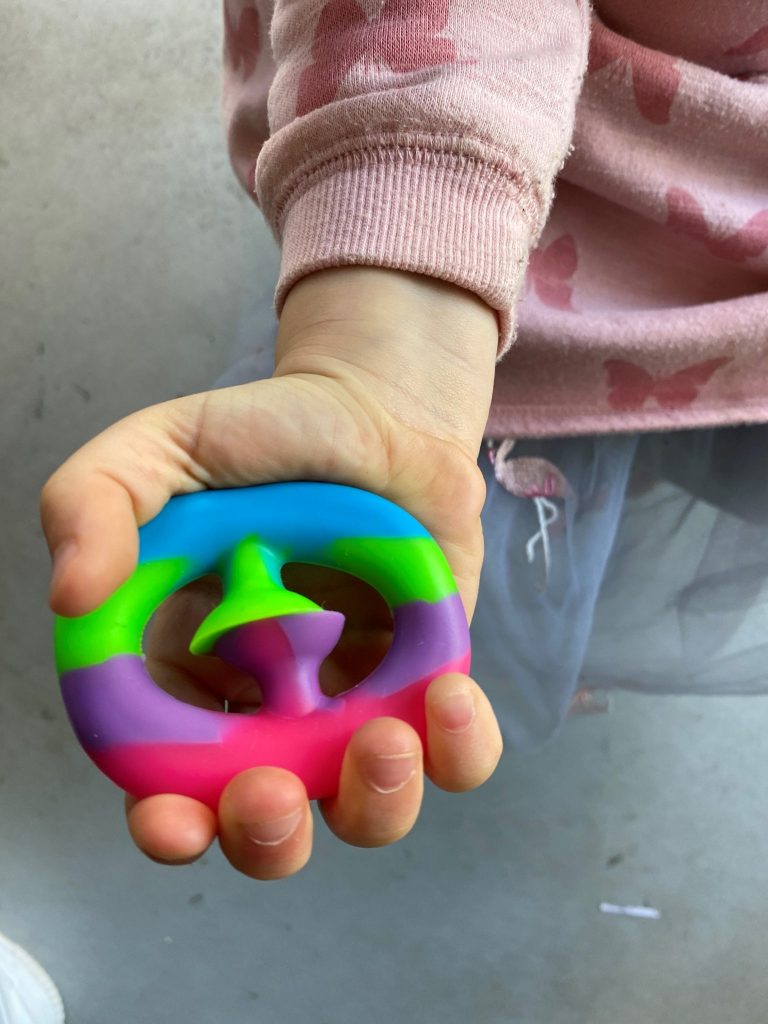
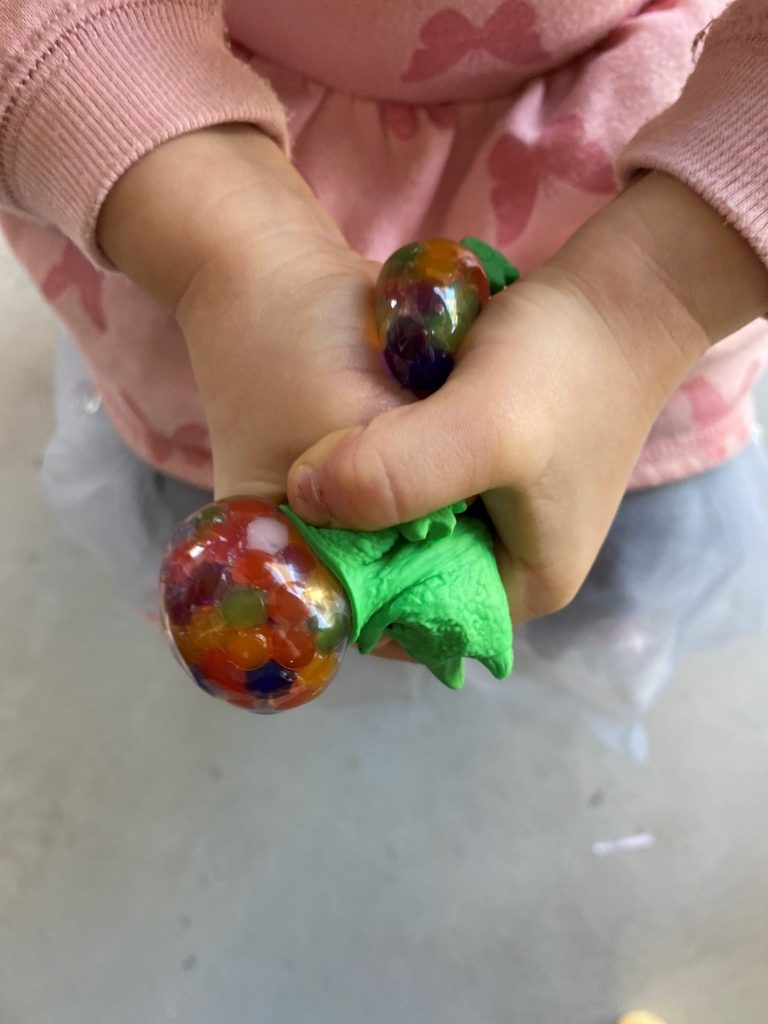
I want children to know it is okay to be in different zones. It is okay to be cranky or sad or frustrated or silly or over-stimulated or happy, but it’s not okay to cause others harm or disrupt other’s work.
Through this work, I have noticed myself relating more to the children and feeling more empathetic to them. I have noticed a shift in my teaching practice from when I began engaging with this work. When big emotions arise with children, I am more patient and take my time to be with the child/ren rather than trying to fix the situation immediately. I have observed children explaining the zones to the other learning groups (teachers and children) and notice the respect they receive for their knowledge. The zones are now being adapted and used with our three older groups (2-5 years).
References
Brown, B. (2021). Atlas of the Heart. Vermilion London.
Kuypers, L. (n.d). https://zonesofregulation.com/index.html
Siegel, D. & Bryson, P. (2012). The Whole-Brain Child. Random House.
Shanker, S. & Barker, T. (2017). Self-reg; How to help your child (and you) break the stress cycle and successfully engage with life. Random House